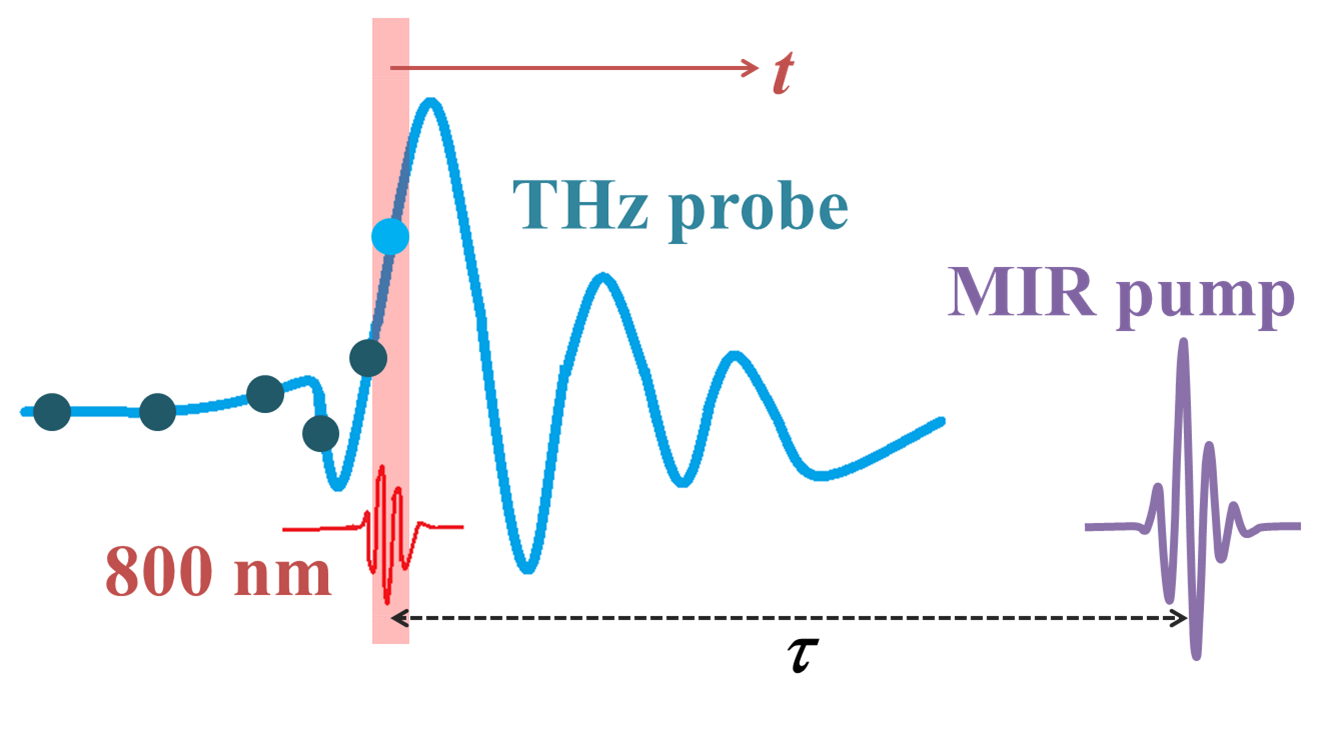Time-Resolved ARPES
Ultrafast laser sources can now be harnassed to combine tailored light excitation with ARPES, the central tool for mapping electronic behavior in materials.

Equilibrium ARPES
Angle-resolved photoemission spectroscopy (ARPES) is a technique for directly extracting the electronic band structure of materials. ARPES measurements makes use of the photoelectric effect: photons at an energy \((h\nu)\) higher than a material's work function \((\varphi)\) will eject electrons. Measuring the angle \((\theta)\) and kinetic energy \((E_k)\) of the ejected electrons provides the necessary information to extract the electron's energy \((E_{bind})\) and momentum parallel to the sample surface \((p_{||})\):Time-Resolved ARPES

The time resolution inherent in ultrafast laser sources opens the way to watch light-induced dynamics unfold, including coherent phonon motions and relaxation processes involving electron-phonon and other electron-boson coupling channels. These dynamics reveal electronic interactions that may be crucial to the formation of the equilibrium ground state.
Tailored Light Excitation + ARPES
Tailored light excitation has been utilized to induce dramatic changes in band structure. ARPES has detected light-induced charge order melting, insulator-metal transitions, Floquet bands, and "valleytronics", for example. Many more light-driven phases have been predicted and await discovery. Tailored light pulses may drive band inversion and induce a Weyl semimetal state in certain pyrochlore iridates. Floquet engineering may generate chiral spin states in correlated Mott insulators and extended regions of superconductivity in cuprates. As new methods emerge to manipulate and control material behavior with tailored light excitation, ARPES will remain a critical tool to understand the underlying processes at work.










